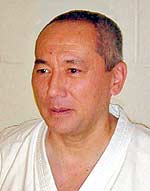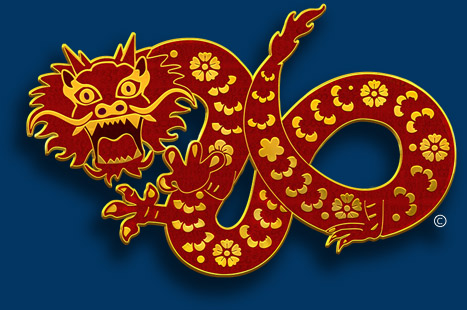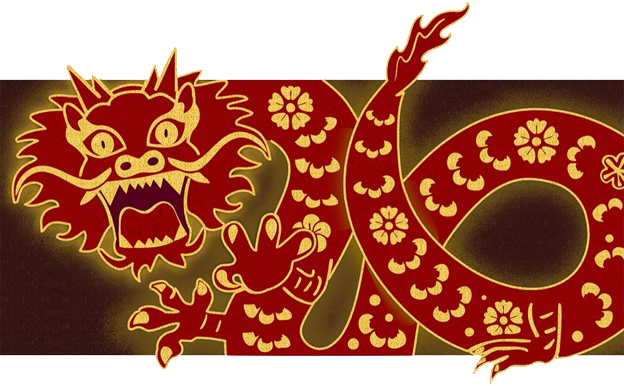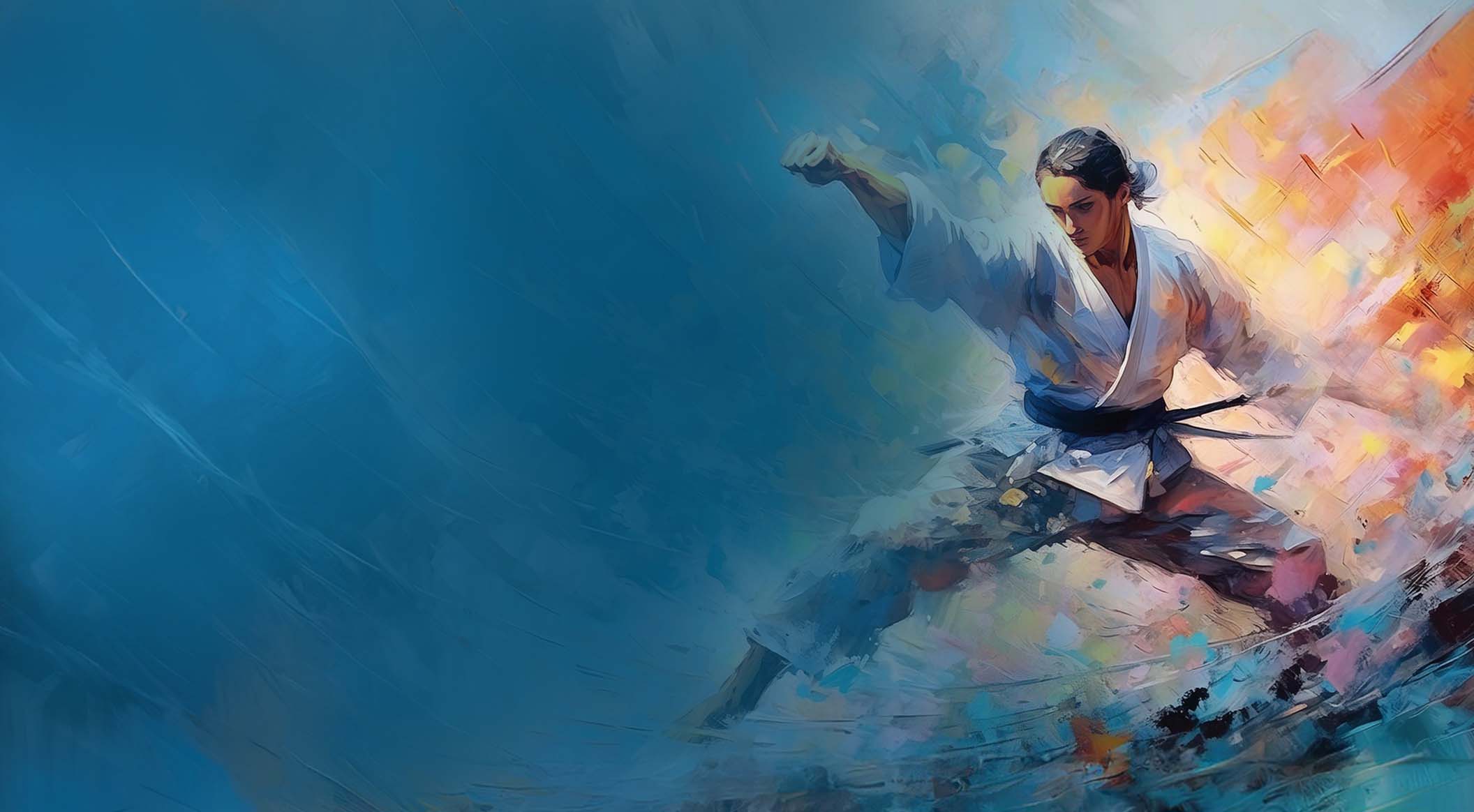Martial Mania
Split the Difference
By George Donahue

If you know that you will always be smarter and stronger and faster and better armed than anyone who attacks you, then you don't need any martial training. The whole point of martial training is to make ourselves smarter and stronger and faster and better armed (if not with physical weapons then with technical knowledge) than we were when we started. Even with the best training, there is never a guarantee that we will be smarter, stronger, faster, or better armed than an attacker or attackers, no matter how much and how well we train. All we can do is do our best to improve our odds with efficient training.
Still, we never know who we'll have to face and we usually don't know what they are capable of doing. We can never count on an attacker playing fair or being alone. Unless they're totally deluded, say crazed by drugs, attackers usually attack only if they feel they have the odds in their favor. They're predators looking for an easy feast. Quite often they're right about us; we are sheep among the wolves. Because that is the case, we have to consider what to do when the odds are against us, when we are less savvy, weaker, slower, and less well armed. Or when we're isolated islands in a sea of hostility.
The first thing that comes to my mind when faced by an "Oh, shit!" moment is RUN!, but that is not always possible, even though it is often the best thing to do. What is always feasible is to expect, or not be unduly surprised by, the unexpected. That, at least, keeps your attacker from getting too much of a psychological edge on you, and it allows you the maximum reaction time squeezable out of a bad situation. That's good, but not enough.
Another thing that is almost always feasible is to handicap yourself. By this I don't mean to cripple yourself, but something like a golf handicap, where you work within your means. You don't rely on success by means of superior speed, strength, or arms. You do have to be, if not superior, at least reasonably equal to your attacker in cunning, and maybe a better actor. This is not easy, as many people who are in the habit of attacking others have enough experience at it to be considered pros. But it's necessary—all the rest is supplemental.
So, here we are: slower, weaker, nothing much going for us. It's too late for preventive measures or avoidance. What do we do? How do we prevail by handicapping ourselves?
We split the difference. As much as possible, we use the attacker's firm belief that he is more cunning, faster, stronger, and—sometimes, if we're lucky—we turn the attacker's weapons against him.
Dumber and dumberer. First, we diminish or neutralize the attacker's intelligence advantage. You may be a Nobel Prize–winning physics professor, and your attacker a grade school dropout, but your attacker may be an expert in mayhem, with a specialty in assault and battery—or rape and murder. Under these circumstances, the attacker is smarter, and the quicker you realize it and adjust for it the better your chances. There may be many ways to neutralize an attacker's superior intelligence, but one that has worked for me more than once is simply this: React with unexpected stupidity. (I know, I can hear the jokes now. There is no way I could act even dumber than I already am. I'm too dumb to act that dumb.) The attacker will expect a certain level of stupidity compared with his expertise. However, if you can instantly convince the attacker that you are even stupider than he thought, you've gained an edge. We can express utter incompetence by showing no reaction, or insufficient reaction, or a clearly "wrong" reaction to the attacker's verbal or visual cues. For example, this could be a general response that indicates that your mind is dulled by drugs (prescription medications, of course). This comes naturally to me and I've used it successfully a time or two. You can also act stupid by specific inappropriate actions or reactions. For example, if the attacker extends his lead foot toward you to close the distance and at the same time reaches into his back pocket for his knife, you don't seem to notice—especially the knife—and maybe step slightly forward, instead of stepping back, which would be more reasonable. Despite your obliviousness, you might "accidentally" readjust your own position to deal with the attacker's position change, but you don't show any hint of having done that purposely. You might also take in hand the Manila folder inside your jacket pocket, but not noticeably. In this case, however, we'll say that you don't have one handy, because they are illegal in your jurisdiction, and convincing acting is crucial. If it seems that you are utterly inept, the attacker will likely ease up, if only just a tiny bit. You've gained at least a tiny advantage over what you would otherwise have to deal with.
Intelligent and intelligenter. Just as good a reaction, if the circumstances warrant, is to fake greater intelligence. Although it's more often useful to fake stupidity, and it's easier for most of us, too, sometimes the opposite tack is better. When your attacker makes a strategic move, you act as though that was exactly what you were expecting him to do. By your body language, you convey that your attacker's move was exactly what you wanted him to do, too, even if it's really the last thing you wanted him to do. You may be up shit creek, but you act as though you have a paddle, as though you are in control and manipulating your attacker. When this works very well, your attacker might decide to retreat before he even makes his move on you. If it works less well, it can buy you a gap to preemptively attack your attacker during the moment he hesitates to reevaluate before attacking you. With both strategies, dumber and smarter, you have in some way neutralized your attacker's intelligence, you've split the difference with him.
Move even more slowly. All speed is relative. If your attacker is significantly faster than you, and you try to match his speed, you lose. Instead, move slowly and deliberately. Establish yourself as the tortoise to your attacker's hare. Or think of yourself as being so slow that you barely move: be an immobile mousetrap to your opponent's darting, quick rodent. Then, when he moves to seize your goodies, slam the rat. You need to lull your attacker into thinking that he can toy with you because of his speed, your slow reaction time, and your even slower movements. This often goes hand in glove with affecting stupidity. Whether he actually slows down or merely misjudges your potential to be faster than he expects, you've split the difference.
Flaunt your weakness/disguise your strength. If you're dealing with someone who may be impaired by alcohol or drugs, make your weakness contemptuously obvious. If you're dealing with someone in a clearer state of mind, still make your weakness obvious, but do so with more subtlety, less exaggeration. In either case, crumple up to be smaller than you really are. Make your face and muscles flaccid, your posture submissive. Seem to occupy less space than you actually command. Show fear, or at least nervousness; be hesitant, be tentative. You are the bait, but you're also the trap. Appear to back up, to withdraw, to retreat, but don't actually give up much, or any, ground. You are decoying your attacker, enticing him to move rashly, to overestimate his strength relative to yours.
Flaunt your strength/disguise your weakness. Make it seem that you have no significant weakness, other than your size. You can ameliorate even that by making yourself bigger, at least as you are perceived by your attacker. Act like a cop dealing with a perp or a conquering soldier dealing with an unarmed civilian. Be decisive and sure of yourself (but not cocksure, which will only telegraph overconfidence, and thus vulnerability, or stoke the fire of rage). In most cases, this approach is not as effective as its opposite, however, unless you are an extremely accomplished actor. Predators with any experience will be more likely to see through this posture than its opposite, because they will have seen more people bluffing this way and more people really in the other state. And sometimes, especially if the adrenaline is flowing at full volume, it will strike them as a challenge rather than a discouragement.
"Fail" at your initial defensive reactions. If you are limber enough or strong enough to take a glancing blow without harm, then you can afford to fail to evade or block your attacker's first blow or grab. Yet you aren't quite there to hit or grab, because your body weight has shifted away from the attack. The more subtle you make this shift, the better it will work, as your attacker will then be unaware of the failure of his first attack. Your attacker's second attempt will usually be contingent upon how well the first attack worked. If he's wrong about the effectiveness of the first, he'll be doubly wrong about the second. You can then counterattack at the same time as the attacker's second attack. You might then, at last, run, but you might follow up, too.
These are just a few ways of splitting the difference between your attacker's dangerous abilities to harm you and your lesser, but still substantial, ability to keep yourself unharmed. You can experiment to find other ways that might suit you better. One deep well of technique for manipulating the perceptions of an attacker or attackers is classical kata. In my Shorin Ryu–based experience, Chinto and Kusanku are particularly rich sources.
Copyright © 2008 George Donahue & FightingArts.com. All rights reserved.
George Donahue
George has been on the board of FightingArts.com since its inception and is also a Contributing Editor.
George is a retired book editor, with a career spanning four decades, among his positions have been editorial stints at Random House; Tuttle Publishing, where he was the executive editor, martial arts editor, and Asian culture editor; and Lyons Press, where he was the senior acquisitions editor and where he established a martial arts publishing program. At Tuttle, he was the in-house editor for the Bruce Lee Library. Throughout his career he also edited, acquired, or reissued a wide array of military history, martial arts, and Asia-centric titles.
He was born in Japan in 1951 and originally named Fujita Tojo, with the Buddhist name KanZan. He was renamed George Donahue when he was several months old. After living part of his early childhood in the U.S. and France, he returned to Japan when he was seven years old and immediately was put (involuntarily) into intense training in traditional Japanese martial arts. His childhood training in Japan was focused on judo and jujutsu, primarily with Ando Shunnosuke, who blended keisatsujutsu (often referred to as police judo) and Olympic style judo in his teaching. He also studied kyujutsu (archery), sojutsu (spear), and kenjutsu (swordsmanship), with several teachers under the direction of his uncle, Tomita Yutaka. Following his return to the U.S. when he was twelve years old, he continued to practice judo and jujutsu, as well as marksmanship with Western style compound bow and firearms, and began the study of Matsubayashi Ryu karate in his late teens. Subsequently, he has studied aikido and cross trained in Ying Jow Pai kung fu. He began studying tai chi chuan in 1973 and now teaches qi gong and tai chi for health and fitness, as well as Okinawa Taijiken, which blends the principals of Okinawan karate with tai chi.
After studying Okinawa Karatedo Matsubayashi Ryu for ten years, he changed his focus to the teaching of Kishaba Chokei. He has been a student of Shinzato Katsuhiko, the director of Okinawa Karatedo Shorin Ryu Kishaba Juku, which comprises karate and kobujutsu (including Yamane Ryu Bojutsu) since 1983. He was also a student of Nagamine Shoshin, Nagamine Takayoshi, Kishaba Chokei, and Nakamura Seigi until their deaths. A key teacher in the U.S. was Arthur Ng, with whom he trained and taught for several years in New York City. He currently teaches Kishaba Juku privately, along with special training in karate, weapons, and self-defense. He has taught seminars throughout the U.S. and in Israel.
He has been teaching martial arts almost continually for sixty years. His first class, at twelve years old, was in judo for a group of military dependents and airmen at Sioux City Air Base, Iowa, at a time when the Air Force Strategic Air Command was beginning to stress training in martial arts, particularly jujutsu.
He was introduced to Kundalini Yoga practice in Japan but didn't begin serious practice of Kundalini and Hatha Yoga until he was in college. He practices yoga at least an hour a day and now teaches various approaches to yoga. He is also a cancer exercise specialist and a Livestrong at the YMCA instructor, helping cancer survivors regain and maintain their vitality.
Search for more articles by this author:






